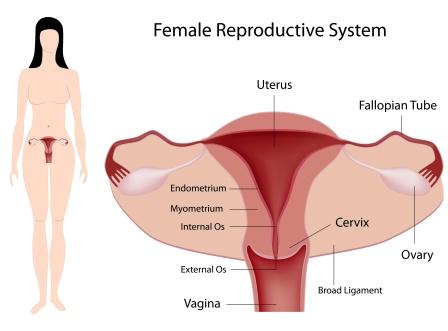Relationship Between Reproductive System And Doshas
By Dr Raghuram Y.S. MD (Ay) & Dr Manasa, B.A.M.S
Reproductive system is differently designed in a man and woman so as to conceive and reproduce next generation offspring.
Read – Gynecological Disorders Causes, Types As Per Ayurveda
Table of Contents
Male reproductive system
Male Reproductive System –
Comprises of pair of testis lodged in a pouch like bag of skin, also made up of muscles, called scrotum. They produce sperms, male gametes and make male hormones. Testes are connected with epididymis, located on backside of each testicle. Epididymis stores and matures sperms. Vas deferens is a long muscular tubule which carries sperms from epididymis to urethra.
Vas carries sperms and passes through spermatic cord into pelvic cavity. At back of urinary bladder they are joined by seminal vesicle, one on each side. Epididymis and seminal vesicle join together to form ejaculatory ducts which open into urethra, tube which voids urine and also ejaculates semen i.e. ejaculatory fluid consisting of sperms at end of copulation.
Read – Beejopaghata: Sperm Damage And Azoospermia In Ayurveda
Urethra passes through prostate gland located at base of urinary bladder, through length of penis and opens at its tip. Penis is male organ of copulation. Seminal vesicles, prostate glands and bulbourethral glands add their fluids and secretions to semen and builds up its volume.
According to Ayurveda, roots of shukravaha srotas i.e. channels responsible for formation, transportation and ejaculation of semen are said to be testes and penis. Read – Srotas: Body Channels and Duct systems – Easy Explanation
Female reproductive system

Female Reproductive System –
Composes of ovaries, innermost parts, and parts that produce ovum, female gonads. They also form female hormones. They are two in number, 1 on right and one on left in pelvic cavity. Each ovary is connected to a tube called fallopian tube. Other end of tube is attached and opens into uterus. Read – Anatomy Of Female Reproductive System – Ayurvedic Perspective
Ovary discharges an ovum every month into uterine cavity. If ovum is fertilised by sperm, implantation of embryo takes place in uterine cavity and embryo grows. Every month in a woman of child bearing age, innermost walls of uterus along with blood is eliminated which constitutes menstrual cycle. When this process comes to a halt it is called menopause following which woman will not be able to reproduce.
Read – Essential Elements For Conception – Garbha Sambhava Samagri
Lower end of uterus i.e. cervix opens into vaginal canal. Vagina is female sexual organ in which semen consisting of sperms is deposited during coitus. Clitoris, a small bud like structure located at top of vulva represents penis in woman and is made up of erectile tissue. Stimulation of clitoris provides pleasure during sex.
According to Ayurveda, roots of artavavaha srotas i.e. channels forming, transporting and eliminating ovum and menstrual blood are considered to be uterus and artava carrying ducts which includes fallopian tubes with ovaries, cervical and vaginal canals.
Read – Prajasthapana Gana – Fertility Herbs Review, Benefits, Disadvantages
Apana Vata control
Apana Vata control over reproductive system and functions
This entire reproductive system, be it in man or woman, falls into territory of vata because all these structures are located in lower portion of body, below navel. This is vata zone. It is obvious that sexual functions and reproduction department is handled by Apana Vata i.e. subtype of vata located below navel. Read – Apana Vata Location, Functions, Imbalance Symptoms, Treatment
Functions of apana vata related to control and operation of reproductive system are thus mentioned in below mentioned reference.

Read – Home Remedy For Heavy Periods – Menstrual Bleeding
Lower vata is related to and controls –
- Ejaculation of semen
- Menstruation and ovulation
- Defecation
- Urination
- Delivery of fetus
Among these, ejaculation, menstruation, ovulation and delivery of fetus are reproductive functions related to apana vata. Read – Physiology Of Menstruation, Menstrual Cycle – Ayurvedic Perspective
Since testes and channels of formation and transportation of semen and ovum are also mentioned as roots of semen carrying and ovum / menstrual blood carrying channels, below mentioned may also be considered as functions of balanced apana vata –
- formation, maturation and transportation of sperms throughout length of male reproductive tract,
- formation, discharge and transportation of ovum / menstrual blood
Even through therapeutic angle, we have seen that treatments and medicines given to control vata are helpful in effectively treating diseases of reproductive system. Read – Polycystic Ovarian Syndrome: Ayurvedic Treatment, Remedies, Diet Vata alleviating herbs, oleation, unctuous enemas given through anal, urethral and vaginal routes are highly effective for treating diseases like impotence, premature ejaculation, menstrual disorders, frequent abortions etc. Medicated enemas are best treatments to combat vata disorders and all these diseases occur in vata zone. Read – Pakwashaya Shodhana Basti: Medicated Enemas For Colon Cleanse
Apana functions, pathology
Important functions and pathology of reproductive system as related to functions of apana vata
When in a state of balance, apana vata controls and enables one to have normal erection, orgasm, ejaculation and a healthy sex life. In women too, balance of apana vata enables normal menstruation, ovulation and sexual bliss. Lower vata also enables conception of embryo and maintenance of pregnancy in a healthy way and aids in proper and easy delivery of child. Read – Ayurvedic Diet And Lifestyle During Menstruation (Periods)
If apana vata goes out of balance, these normal functions will not be rendered. In fact many diseases related to potency and fertility in both men and women may occur.
In normal conditions apana vata enables easy ejaculation when there is a reflex, easy menstruation during periods and easy delivery of child at term of pregnancy. Read – Artava – Menstrual Blood Formation, Healthy Characteristic Features
When there is no ejaculation reflex, same apana vata engages itself in manufacture and storage of sperms. Same is case with menstruation. Apana vata helps in implantation and development of embryo and maintenance of pregnancy. When term occurs, same apana vata helps in normal delivery of child. Read – Diet And Lifestyle For Women In Ayurveda
Apana vata dysfunctions may cause increased or decreased sexual desires, impotence, pre-mature ejaculation, oligospermia, excessive or less bleeding and pain during menstruation, dysmenorrhea, amenorrhea, habitual abortions, miscarriages, premature delivery of fetus, fetal impaction during delivery and many other conditions.
Click to Consult Dr Raghuram Y.S. MD (Ayu) – Email / Skype










